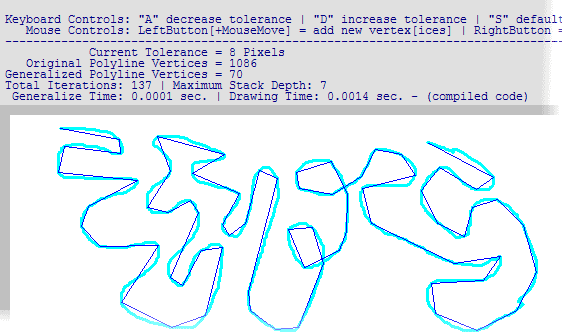by Stavros (3 Submissions)
Category: Graphics
Difficulty: Intermediate
Date Added: Wed 3rd February 2021
Rating: ![]() (18 Votes)
(18 Votes)

The process of generalization is normally executed when the map scale has to be reduced. Another usage is in cleaning up noisy representations of polylines, possibly generated by a raster-to-vector conversion (tracing).
Generalization can be seen as a form of lossy data compression; given a large and complicated object, we seek to simplify it by reducing detail. Ideally, we obtain a polyline/polygon with far fewer vertices that looks essentially the same at a target scale. This can be a big win in computer graphics, where replacing a large model with a smaller one might have little visual impact but require significantly less storage space and rendering time.
API Declarationsgdi32, kernel32
Download Douglas-Peucker Generalization Algorithm for simplifying 2D & 3D polylines and polygons (10 KB)
No comments have been posted about Douglas-Peucker Generalization Algorithm for simplifying 2D & 3D polylines and polygons. Why not be the first to post a comment about Douglas-Peucker Generalization Algorithm for simplifying 2D & 3D polylines and polygons.